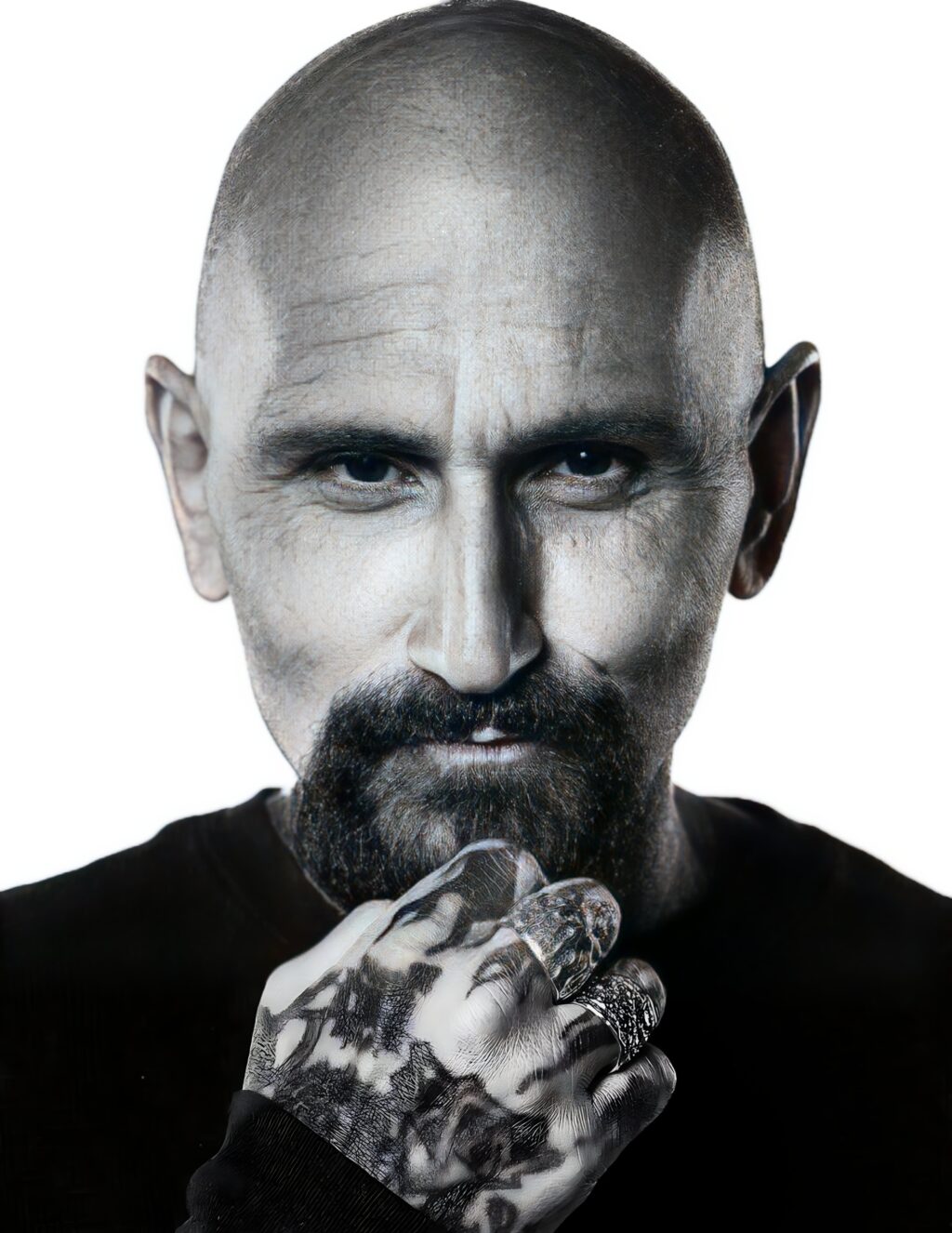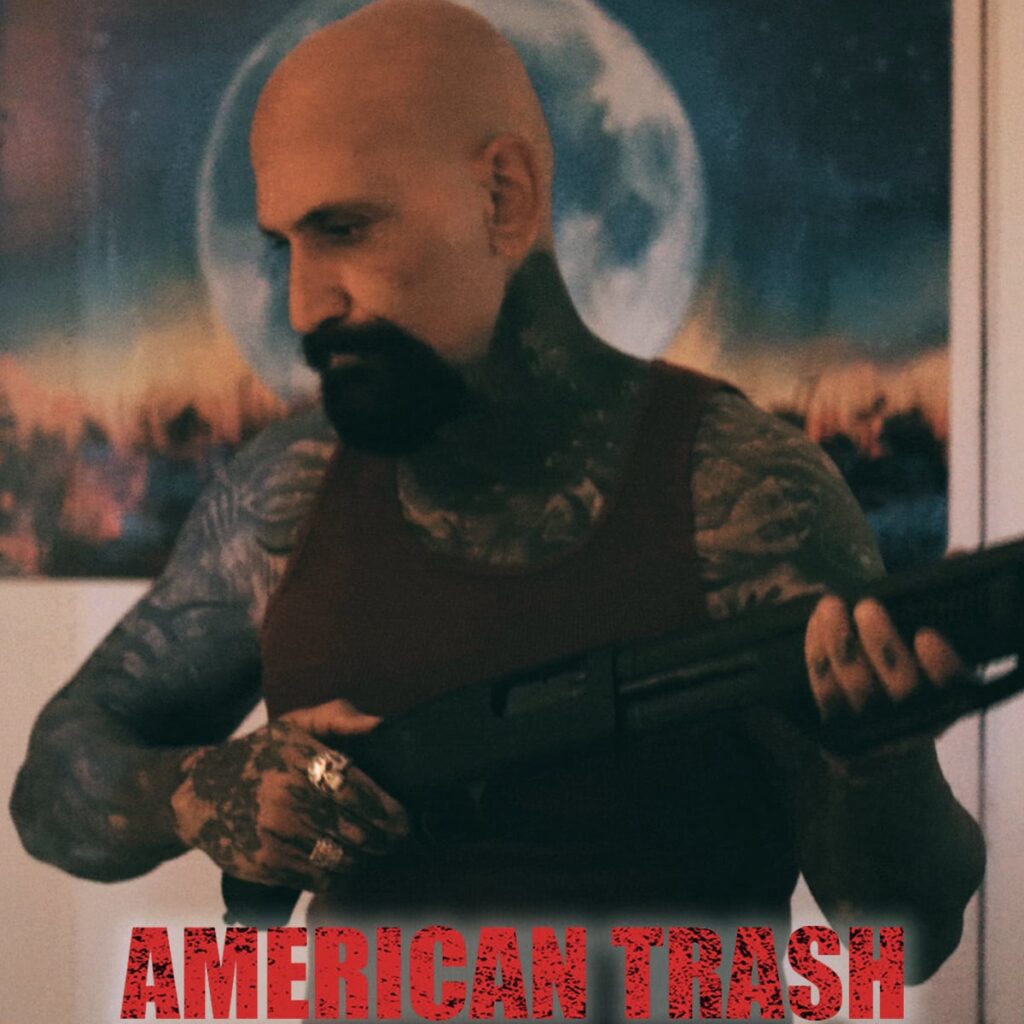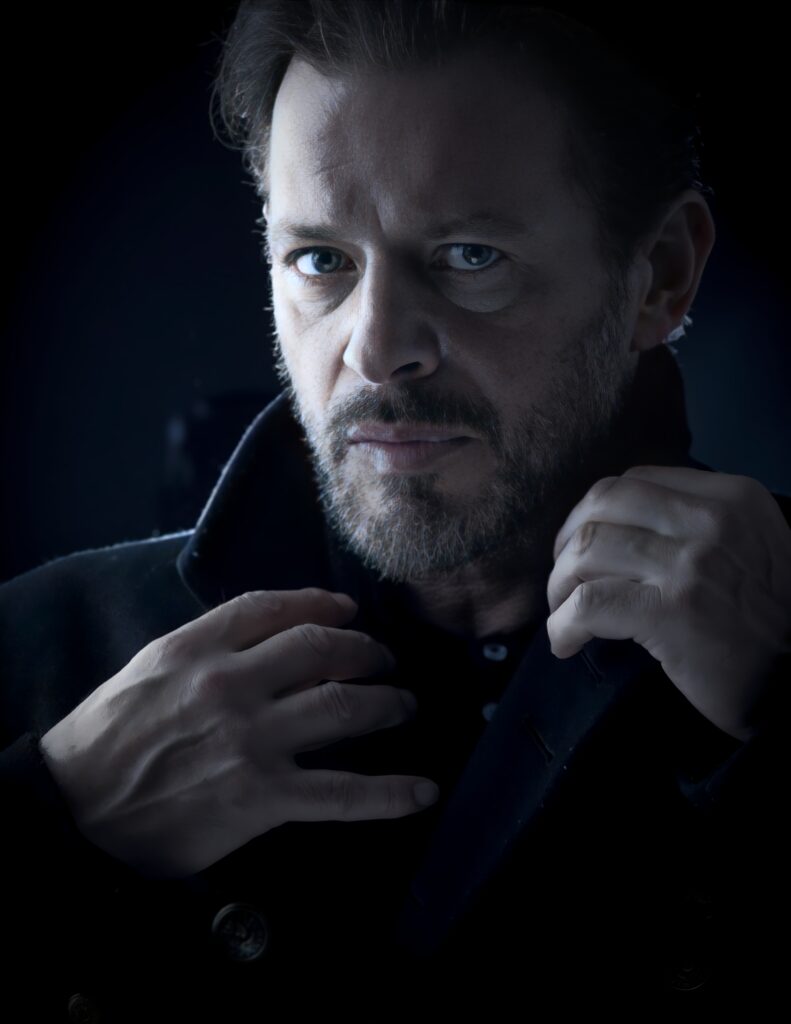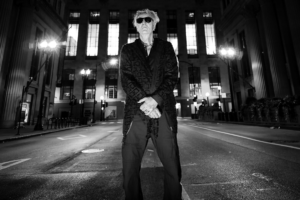Robert LaSardo – The American Trash Diaries

1. This film marks your directorial debut. What inspired you to step behind the camera, and why did you choose “American Trash” as your first project?
I wanted to make a movie that gave me room to express feelings within in my work that I’ve never been allowed to explore in the mainstream. I feel I have been pigeon held by an image that does not reflect my range or creative skill set. Almost everything prior to this has been a monstrous almost subhuman display of aggression in the characters I portray. The score that was composed for the film evokes emotions that help drive the narrative. It’s a very somber and slow film deliberately to be in contrast with the sensationalized lunacy that for me has been devoid of substance or soul.
2. “American Trash” touches on heavy themes like environmental decay, social crisis, and the drug epidemic in Los Angeles. What message do you hope to communicate through these themes?
The point was to decondition people. The film is more of a meditation on these themes rather than the exploitation of them. My hope is that this film will resonate with people that have suffered loss, served in the military and are struggling with PTSD. American Trash is a social commentary about Los Angeles. A beautiful city I’ve watched over the decades fall into environmental ruin. I wanted to address these issues in a way that I felt was sincere and with love.
3. Your character, Milles Carpis, is a war veteran haunted by PTSD. How did you prepare for this role, and what personal experiences or insights did you draw upon to portray Milles?
Well, I already suffer from PTSD so it wasn’t a far reach in that regard. Being a veteran helped too. The years I served weren’t without experiences that have shaped me for better or worse. I also looked in the mirror. It was easy for me to see a lot of past trauma I’ve experienced throughout my life, and draw from that. Whether it was loss of a loved one or conflict through violence. And then I looked around at the world I’d been living in within Los Angeles. This disturbing landscape of despair and homeless people. Instances of social crisis that I could relate to. I had been homeless for about five years and living in a motel on and off. So it was easy for me to identify with the Milles character. A man who has cloistered himself away from society and is at odds with the world and himself. I was suffering from a lower back injury during the shoot. So between the pain meds and alcohol consumption I was able to turn myself inside out.

4. Tom Sizemore’s performance in “American Trash” is one of his final roles. What was it like working with him, and how did his presence influence the film?
I’ve worked with Tom on quite a few films. We’ve shared scenes together and interacted often. So I had a sense of him, his method and process. It was just about navigating Tom into a place that was effective within the circumstance, and focusing him in so that we could have the best of what he could offer. I always knew he had an extraordinary ability. I just wanted to make sure that despite our friendship, he would understand the importance of bringing his A game. So we sat down and it was kind of a wrestling match for a minute, over the material, the dialogue, everything. But ultimately, because of his trust in me, I think we were able to have some fun with it, and I can look at it in retrospect and say, right on, he nailed it. Tom’s influence on the film in the scene he appears, is reflective of the world I created for him to inhabit with sensitivity and grace. I miss him.
5. Lorelei Linklater, known for her role in “Boyhood,” plays a significant part in the film. What led you to cast her as Melissa Maddox, and how did her performance shape the narrative?
Lorelei is the embodiment of the Melissa character. This free spirited neo hippie archetype that I created. A friend of mine had read my script and told me that he knew of an actress, he felt was the living manifestation of what I had written. After speaking with Lorelei on the phone for a couple of hours, and discussing the project, I realized my friends intuition about her was dead on. Minus some of the Charlie Manson ideology I toy with in the film. That clearly is the fictional element she carries as the Melissa character, but very realistically I must add. There’s nothing contrived or sinister in her portrayal as the free spirited environmentalist that has an affection for Charles Manson’s ecological idealogy. There’s a vulnerability and innocence that Lorelei possesses that translates well on screen. I’ve always been a fan since she first appeared in her father’s film, Waking Life,’ (Richard Linklater). So it was a real treat to play opposite her all these years later. Her mere presence shapes the narrative through the atmospheric imagery she displays with mystery and magic.

6. The film is set against the backdrop of a deteriorating Los Angeles. How do you see the film reflecting or commenting on the current social and environmental issues facing urban areas today?
I wanted to explore the social and environmental crisis from the inside out. Rather than show how ugly things appear in Los Angeles, which I touch on briefly. I preferred to emphasize the beauty in that world, while exposing the culprit in the minds of people that move through this oasis and contaminate it with arrogance. The physical pollution is merely a symptom of a malignant relationship to nature and ourselves. My theme suggests, it is us, that hold the responsibility in the way we deal with each other day to day. Regardless of what we face in our communities we have a moral obligation to muster our humanity. Whether it be an economic crisis, environmental crisis or a war. The challenge upon man is to remedy things peacefully with respect for each other and the earth we share.
7. What were some of the biggest challenges you faced transitioning from acting to directing, particularly in a film with such a complex and layered storyline?
Locations are tough when you’re on a shoe string budget. But with a little ingenuity and just flat out stealing locations, you make things happen. Directing myself without the benefit of a video village was pretty challenging. How you experience moments as the character may feel profound, buts it’s still subjective. Others will ultimately view it and evaluate its affectiveness. Keeping cast members focused in a group setting can be a labor of its own. Especially when there is a tendency to talk shop or boast about ones career on set. My approach was always to remind the actors to be mindful of why they were there. I think it’s crucial to regard preparation with as much importance as being on camera. What you do prior to action’ shows in your work.
8. The storyline explores deep emotional and psychological territories. How much of this film is a reflection of your own experiences or views, especially regarding themes like loss, PTSD, and the search for solace?
The film is basically a conversation and argument with myself, in various forms. Melissa represents innocence. Mandy symbolizes optimism. Charles personifies divinity. Tai embodies unconditional love. Milles reflects a world that is both beautiful and terrifying. Whether it was, the better angels of my nature” or the corruption element that we all struggle with. Having a dialogue with my dual nature provided the catharsis I needed to come to terms with issues like loss, aggression and PTSD.
9. Detective Anderson, played by Costas Mandylor, plays a crucial role in the narrative. What was the dynamic like between you two on set, and how did you work together to bring these characters to life?
Costas has quite the intensity so I didn’t have to maneuver him much. I just kinda sat back and let him do his thing. It was basically, this is the circumstance Costas, this is your character, and this is mine. Let’s dig in deep. It was easy because he was always ready. He brought that commitment to our scenes every time He also has a very charasmatic, lighthearted personality, but when I flipped the switch and said action’, he immediately shifted into the world I created. It was easy to play off of him because of that. The Milles character lives in this tempestuous, unpredictable characharacter field. There was a rich combination of elements between him and I. Definitely some fireworks happening in terms of the frequency we shared.

10. After completing “American Trash,” do you have plans to continue directing? What kinds of stories or themes are you interested in exploring in the future?
I’m reading a book entitled The Manson File: Myth & Reality Of An Outlaw Shaman by Nicholas Shreck. I’m interested in going further into the Manson phenomenon. Especially with new information that basically debunks the helter skelter myth fabricated by Vincent Bugliosi. I’d like to write a screenplay that shows Manson in a more realistic light.
IMDB: Robert LaSardo – IMDb


